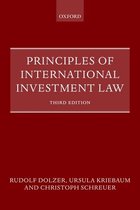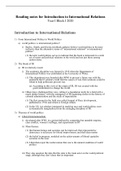Samenvatting
Summary and Notes - Masters course International Investment Law
- Vak
- Instelling
- Boek
This document contains notes on lectures, a summary of the book Principles of International Investment Law by Dolzer, case law summaries of relevant investment arbitration, as well as a hypothetical fact pattern and application of principles. Comprehensive overview of all information necessary for ...
[Meer zien]








